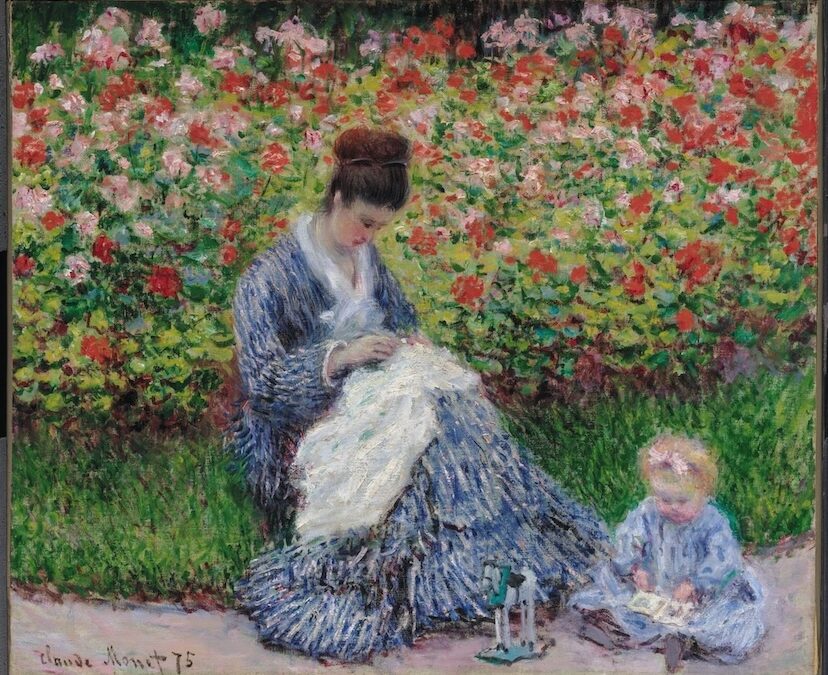In many curriculums that are spiritually guided and focused on emotional development for children, we see the emphasis on handwork in early childhood education. Whether it is weaving, sewing, writing, drawing, painting or building, handwork activities are very important for many reasons on the emotional, intellectual and spiritual level.
Handwork brings a sense of clarity and balance between intellectual and movement activities, allowing the children to experience the struggle, joy, and care required in the creative process. The rhythmic repetition of knitting and crocheting, for example, strengthens a child’s concentration and hand-eye coordination. Children learn to correct their mistakes, value hard work and develop patience.
Weaving especially is very important for spiritual reasons also. When the child learns to weave they are essentially receiving a spiritual restart. They weave out old ideas and old patterns, and weave in new ways of thinking and conceptualizing for this incarnation. Weaving is connected to their North Node path of consciousness, expansion and soul growth, and it helps to bring forth more easily their higher potentials on their path ahead in life.
On the spiritual level, weaving and all handwork are meant to balance the inner world and untangle what needs to be untangled through the work of our hands and the clarity of mind. Weaving aligns with our hands and 3rd house of free will, talents, skills and our soul’s courage, which then puts us into the apprenticeship of learning dedication, reverence, patience of rhythm and perseverance. These are all qualities the North Node and our higher 9th house of expansion, purpose and dharma will ask of us if we choose to step onto our higher path in our adulthood. Handwork essentially allows the child to unlock and explore its hidden talents and gifts, as well as learn the skills needed to lead a more fulfilling life in adulthood.
When the children are given these handworks early on, it is also helping their management of their South Node and inner balancing. Especially in childhood, children can sometimes feel a lot of intensity from any past life residues and handwork softens their inner world, so that they can relax in their natural flow of this life and trust their bodies.
Handwork practices are never forced nor even even directly taught on the children in any way. The teachers will often begin weaving or painting or building blocks, and sit amidst the children; they wouldn’t teach nor force the children to do these, they would just sit and do these. And whatever the children would feel drawn to, they will begin to mimic it. This gives them their free will to explore what they love, and then helps them clear their North Node path when it’s time for it to appear in their life later on. These handworks and arts are also crucial for their development overall, and all the qualities they will be developing through them.
Weaving is a meditative act, and is deeply spiritual in its nature. We weave out old ways of thinking, and we weave in the new ways. There is serenity that begins forming, and a sense of deep acceptance – and we are essentially grounding ourselves while also conceptualizing our new birth and incarnation. We are entering into our new rhythm of this life – with our hands now, our body now, our mind now, our breath now, our movement now.
We weave ourselves and our lives each day. Separate strands and threads, one after one, some escape us and need to be woven again; some are done and some undone, sometimes with patience, and often with hope, or because we just need to do them.
Openings and closings yet closings only to then begin again and move through something else; and some need to be anchored by our own personal simple ordinary habits that hold us together. And all, under the constant beat of our heart; and all, with kindness and patience of rhythm.
In these curriculums, especially when it comes to weaving, sewing and knitting, no threads are wasted, and all are materials are treated with care and respect.
This helps the children to foster feelings of connection, reverence and appreciation for the gifts of our earth, plants, and animals. The children also develop a relationship to each colour, through working for extended periods with one and then another: a love and understanding of the colour’s qualities can speak to them on a deep soul level. Children also learn how to play and interweave with all the colours and see forms emerge from contrasts, tones and shades. There is also joy and a sense of accomplishment to see their works come together through their own two hands and hard work, through their devotion and patience of rhythm. This increases their confidence level and trust in their skills.
Handwork can include various activities, and again, let your child choose which ones they feel drawn to. You can engage yourself with some of these and see if the child expresses interest on their own.
Handwork activities may be for example kneading bread, building with blocks, washing dishes, gardening, playing in the sand or mud, making things with clay, drawing, painting with watercolours, wiping down the dust from tables and cleaning the house, making their clothes, making bracelets or necklaces, or any other crafts like making paper animals or storybook characters.
Then there is also the softer handworks which are works with the threads such as weaving, knitting, sewing, carding wool, learning to roll balls of wool and other fabrics, and pom pom makings.
Again, the intention isn’t on “teaching” these to the children directly, but to provide the materials and space for this to happen through imitation. You may sit down with a craft near the child playing and if the child is interested they will often ask to help or join in. If you are part of a school desiring to bring such a curriculum or way of teaching in your practice, you may have few teachers doing different crafts, or alternating different crafts through the week.
In this way, handwork for the young child is an invitation rather than a requirement. Children take lots of time with their projects and often repeat the same projects again and again – and this is because young children actually love and crave some repetition as it gives them a sense of structure, which they can study, observe and feel some stability from.
I already mentioned the spiritual benefits, but what other benefits are there – well, many!
From a more practical point of view, handwork for early childhood promotes capacities for thinking, measuring and visual perception, and helps to develop fine motor skills. It builds problem solving skills, and increase the confidence level in children, as well as learning from early on that they can create solutions and navigate through obstacles. It builds their capacity to concentrate and focus, which are much needed in our fast paced digital world, so that they don’t lose attention spans.
Handwork also develops patience, devotion, perseverance and delayed gratification; and learning delayed gratification is a key to inner fulfillment and happiness in their lives and relationships. Instant gratification can often numbs us emotionally and starve us of feeling deep joy. Handwork encourage gratitude also for each step of the way and the creative process, which is absolutely important because the creative process is a hard one and needs various set of skills of physical and emotional levels. Handwork awakens the child’s unique artistry and seeing their creativity and unique ideas and visions shape and form.
Furthermore, handwork fosters a sense of enjoyment in the creation process and satisfaction with having made something useful and beautiful. It builds a child’s sense of life through rhythmic activities such as knitting, weaving & crocheting, and can relieve stress through the meditative act of the weaving. It helps to build confidence and an experiential learning of the correlation between practice, hard work and fulfillment.
For personal readings with me, you are welcome to browse through my Offerings.

For more of my writings, browse through my Art of Love.
If you wish to support me and my work, you may do so by sharing it or donate here. For personal readings with me, you may visit my Offerings.
Your support means so much to me! Thank you wholeheartedly!
Cover art by Claude Monet, Camille Monet and a Child in the Artist’s Garden in Argenteuil, 1875, Public Domain via Wikimedia Commons.




